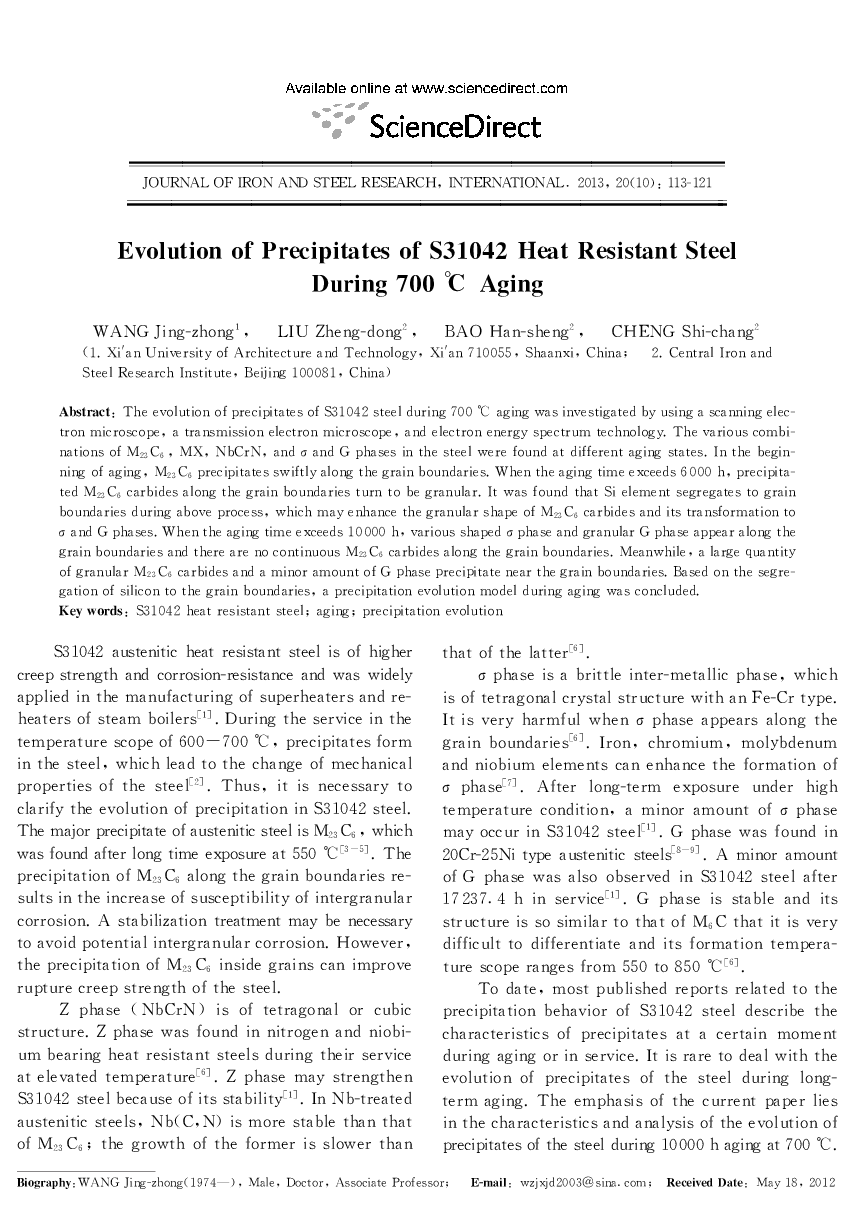| Article ID | Journal | Published Year | Pages | File Type |
|---|---|---|---|---|
| 1628711 | Journal of Iron and Steel Research, International | 2013 | 9 Pages |
Abstract
The evolution of precipitates of S31042 steel during 700 °C aging was investigated by using a scanning electron microscope, a transmission electron microscope, and electron energy spectrum technology. The various combinations of M23C6, MX, NbCrN, and Ï and G phases in the steel were found at different aging states. In the beginning of aging, M23C6 precipitates swiftly along the grain boundaries. When the aging time exceeds 6000 h, precipitated M23C6 carbides along the grain boundaries turn to be granular. It was found that Si element segregates to grain boundaries during above process, which may enhance the granular shape of M23C6 carbides and its transformation to Ï and G phases. When the aging time exceeds 10000 h, various shaped Ï phase and granular G phase appear along the grain boundaries and there are no continuous M23C6 carbides along the grain boundaries. Meanwhile, a large quantity of granular M23C6 carbides and a minor amount of G phase precipitate near the grain boundaries. Based on the segregation of silicon to the grain boundaries, a precipitation evolution model during aging was concluded.
Keywords
Related Topics
Physical Sciences and Engineering
Materials Science
Metals and Alloys
Authors
Jing-zhong WANG, Zheng-dong LIU, Han-sheng BAO, Shi-chang CHENG,
